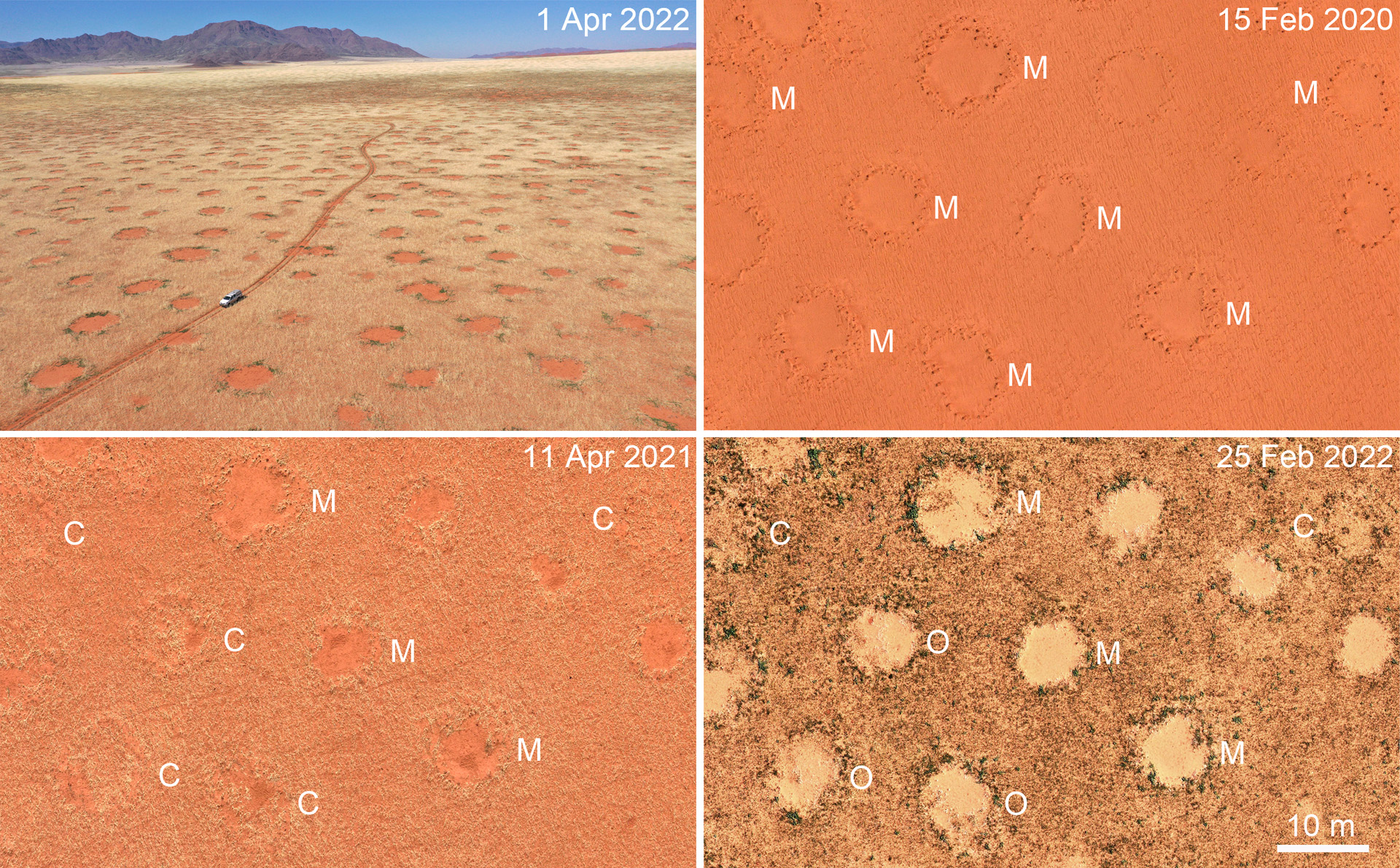Dr. Stephan Getzin | Scientist | Ecologist
Science Blog
Welcome to my science blog. Here I will publish articles at irregular intervals in which I discuss the latest research developments on fairy circles, plant rings or related topics. These blog articles are usually science-based discussions, but they are written to be understandable to a broad readership.Patterns of fairy circles in Namibia are driven by rainfall and soil infiltrability
Releases | Stephan Getzin | July 18, 2024
Fairy circles form a remarkable spatial pattern across hundreds and thousands of meters at various regions of the Namib Desert. We are studying their distribution patterns at the landscape scale since more than ten years and published our first detailed spatial analysis in May 2014. Viewed from the air, fairy circles are an ideal point pattern whose analysis may allow interesting insights into the causal processes that shape these patterns over time. With our new study Spatio‑temporal dynamics of fairy circles in Namibia are driven by rainfall and soil infiltrability, published in June 2024, we present now the first detailed drone survey of Namibian fairy circles.
10 Fairy circle facts
Releases | Stephan Getzin | March 9, 2024
In October 2022, we published in PPEES the first thorough test of the plant self-organization hypothesis and the sand termite hypothesis. Based on examining 500 excavated grasses in the southern, central and northern Namib we showed that grasses within fairy circles died due to plant water stress but not due to root herbivory by termites. Jürgens & Gröngröft (2023) then wrote a rebuttal, claiming that “Sand termite herbivory causes Namibia´s fairy circles”. The statements of that paper have caused some confusion about the topic. Therefore, we have now examined the claims of that paper in detail and published a response in PPEES, which presents the current state of knowledge. Below you will find a list of fairy circle facts that briefly summarize the content of our new paper Desiccation of undamaged grasses in the topsoil causes Namibia’s fairy circles – Response to Jürgens & Gröngröft (2023).
Phenotypic changes and a population-level response to water stress
Releases | Stephan Getzin | December 13, 2023
Plants in arid environments often form spatially periodic vegetation patterns in order to respond to water stress. This patterned type of a population-level response to resource stress happens mainly in species-poor communities where only very few herbaceous or woody species dominate. The simple structure of the plant community thus allows for the emergence of strongly geometric patterns, composed of plants and bare soil, because there are no other niche-adapted species that would occupy the space. Usually, there is a pattern sequence between the two stable states of uniform vegetation cover under higher precipitation regimes on the one hand and bare soil at very low mean annual precipitation on the other.
Welcome to FAIRY-CIRCLES.info! I am interested in the ecology of drylands, fairy circles, plant rings and all kinds of spatial vegetation and animal patterns, using a whole range of quantitative methods.



